Vitamin Supplementation: Synthetic Alternatives vs. Organic Nutrients
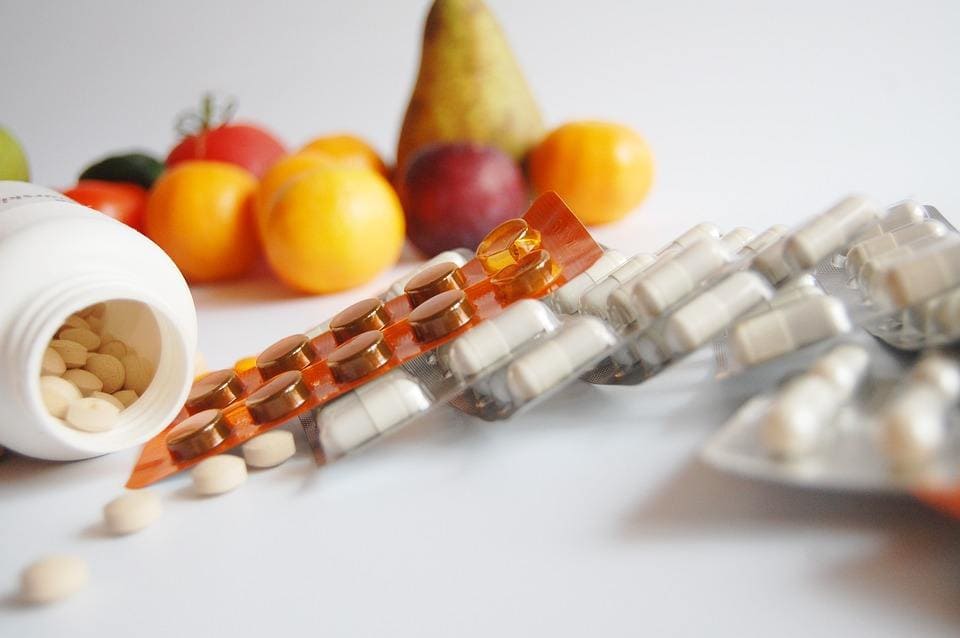
Vitamin Supplementation forms the basic cornerstone of a healthy body. It affects many bodily functions such as cognitive development, homeostasis, immunity, and metabolism.
Most often we encounter terms such as vitamin deficiency, vitamin hyperdoses, and nutrient supplementation on a daily basis. Although we commonly see such things being flashed on our television screens, given radio airtime, and even on print ads.
There is very little information given regarding the products themselves that it has become common knowledge for people to think vitamins bought from a drug store are healthy.
This is however farther from the truth and is, in fact, a form of dangerous fallacy which still resurfaces time and time again often with consequential and very alarming results such as vitamin overdose.
Contents
What is Vitamin Supplementation?
 Vitamin supplementation refers to the process wherein the body receives and makes use of the vitamins being taken. Vitamins, in general, are an organic substance which is usually gained through plant and animal sources. Although a large chunk of the major vitamins can be found abundantly in plant sources.
Vitamin supplementation refers to the process wherein the body receives and makes use of the vitamins being taken. Vitamins, in general, are an organic substance which is usually gained through plant and animal sources. Although a large chunk of the major vitamins can be found abundantly in plant sources.
It is for this reason that vegetables and fruits should form the basis of a balanced diet. Vitamins can still be gained through animal sources and only differs significantly in the process and the mechanism it is metabolized by the body.
Organic Vitamins?
Just as stated earlier, vitamins are obtained both from plants and animal sources and some vitamins such as vitamin D can be made through our skin. It is, for this reason, it is advisable for people to get at least get 20 minutes of direct exposure to sunlight a day.
Almost all mammals except higher level primates which include humans are the only few species which cannot produce vitamin C. This is because we lack the enzyme necessary to convert
Synthetic Vitamins?
Synthetic vitamins mimic the natural reaction of the body when given such nutrients and therefore sometimes cause problems to the one taking them. Allergies in the form of skin lesions or stomach upsets tend to be common when taking synthetic vitamins. It is also not unheard of with certain people to develop health problems if the intake is not managed or maintained properly.
Control and Management
Vitamins obtained through natural food sources are pretty much safe and easily manageable. It is usually the ones which are contained in so-called health foods, food supplements, and vitamins which you need to be worried about. In large doses, they have been known to cause fatal reactions to major organs which normally would be able to dispose of the substances or produce enzymes to inhibit the absorption to healthy cells.
Synthetic vitamins which are produced by pharmaceutical companies and heavily marketed by the industry are usually shrouded in the shadows. In normal cases, if they are known to have such harmful effects on the body, they should only be dispensed only with a prescription.
 It is however impossible to limit the sale and distribution to vitamin supplements, health foods, and food supplements with a prescription since they aren’t classified as drugs. Hence you’ll usually see the phrase “No Therapeutic Claims” on the label or the containers they come with. This usually puts consumers on a bind both legally an socially.
It is however impossible to limit the sale and distribution to vitamin supplements, health foods, and food supplements with a prescription since they aren’t classified as drugs. Hence you’ll usually see the phrase “No Therapeutic Claims” on the label or the containers they come with. This usually puts consumers on a bind both legally an socially.
One, they can’t simply sue the company or doctor for damages as generally such supplements do not carry the weight in court as medical drugs do. Sufficiently “No Therapeutic Claims” can be both interpreted as a no assurance to cure or no assurance to cause harm.
Second, overdose from such substances still carries a legal and personal responsibility of the person who ingests the substances thus rendering any social and legal responsibility from the companies or parties involved.
Get Examined
One way to avoid becoming a victim of overdose is to know how your body reacts to such chemicals. The only way to know about that is to get yourself tested.
If you think you have problems related to nutrient imbalance and require vitamin supplementation as a way to preserve your health. Then seek professional advice from your healthcare professional.
 It is never a good idea to second guess such problems or to settle with self-medication as an alternative. It is best to always seek medical help whenever necessary. Although getting a full physical just to know if you are safe to consume such products is a step too much. Then consider the long-term and short-term consequences.
It is never a good idea to second guess such problems or to settle with self-medication as an alternative. It is best to always seek medical help whenever necessary. Although getting a full physical just to know if you are safe to consume such products is a step too much. Then consider the long-term and short-term consequences.
The problem might not present itself early one but who says it can’t manifest itself at a later time. The only surefire way to know you have a problem is simply to seek out and find out if you do.
So get yourself tested, ask a professional, and do research. Healthcare is expensive but taking the cheaper route and gambling it on advertising will do you no good.
Food and Alternative Sources
Vitamin A
 Vitamin A shows up in food as beta-carotene. The body must convert it into vitamin A to be useful which sounds less effective, however, vitamin A can become a toxin in large doses. Beta-carotene is a nutrient which allows the body to convert what it needs and discard what it does not need as a natural safeguard against cellular and tissue damage.
Vitamin A shows up in food as beta-carotene. The body must convert it into vitamin A to be useful which sounds less effective, however, vitamin A can become a toxin in large doses. Beta-carotene is a nutrient which allows the body to convert what it needs and discard what it does not need as a natural safeguard against cellular and tissue damage.
Food Sources:
The highest concentration of vitamin A can be found in sweet potatoes; One medium-sized baked sweet potato contains more than 28,000 international units (IU) of vitamin A which is about 561% of your recommended daily value (DV). Beef liver, spinach, fish, milk, eggs, and carrots also are good sources of vitamin A.
Synthetic Sources:
Synthetic vitamin A is known to us as retinyl palmitate or retinyl acetate. This synthetic substance is made from combining fish or palm oil with beta-ionone. The chemical compound beta-ionone is created using citrus, acetone, and calcium oxide.
Vitamin B
The B vitamin family is made up of eight different vitamins. They are commonly recognized as a group and often work together in the body. Each of the individual B vitamins performs unique and important functions in the body.
Food Sources:
Vitamin B food sources are abundant in both animal and plant products in varying amount. It is found in poultry products such as eggs and chicken meat, dairy products such as butter and cheese, and fish products particularly fatty fishes such as tuna. It is also found in plant products from soy and wheat.
Synthetic Sources:
- B1 (Thiamine) – Thiamine mononitrate or thiamine hydrochloride is made using coal tar, ammonia, acetone, and hydrochloric acid. The synthetic version is much less absorbable since it isn’t bound to phosphate. It forms a crystalline in a structure which is unlike plant-based counterparts.
- B2 (Riboflavin) – Synthetic riboflavin is made with acetic acid and nitrogen or through the use of genetically modified bacteria and fermentation. It has been shown to be less absorbable and then quickly removed from the bloodstream and expelled from the body in urine.
- B3 (Niacin) – Nicotinic acid is created using coal tar, ammonia, acids, 3-cyanopyridine, and formaldehyde. It is less absorbable and has a higher risk of developing side effects.
- B5 (Pantothenic Acid) – Pantothenic acid involves using isobutyraldehyde and formaldehyde to form a calcium or sodium salt. The alcohol derivative, panthenol, is sometimes used since it is more stable and has a longer shelf life.
- B6 – Pyridoxine hydrochloride is derived from petroleum ester, hydrochloric acid, and formaldehyde. It isn’t readily absorbed or converted in the body and has been shown to inhibit the action of natural B6 in the body. It can also cause side effects which are not normally found from natural food sources.
- B7 (Biotin) – Synthetic B7 is produced using fumaric acid.
- B9 (Folate) – Folic acid doesn’t actually exist in natural foods, is crystalline, and is not easily absorbed by the body despite the large quantities which are added to vitamins and supplements. It comes from petroleum derivatives, acids, and acetylene.
- B12 (Cobalamine) – Cobalt and cyanide are fermented to make cyanocobalamin known colloquially as vitamin B12.
Vitamin C
 This nutrient is used for the growth and repair of tissues in all parts of the body. It helps the body produce collagen, which is an important protein found in skin, cartilage, tendons, ligaments, and blood vessels. Vitamin C is also needed for healing wounds, repairing, and maintaining the bones and teeth.
This nutrient is used for the growth and repair of tissues in all parts of the body. It helps the body produce collagen, which is an important protein found in skin, cartilage, tendons, ligaments, and blood vessels. Vitamin C is also needed for healing wounds, repairing, and maintaining the bones and teeth.
Food Sources:
Most people think vitamin C is abundantly found in citruses such as oranges and grapefruits when they think of the nutrient. However, it is actually sweet red peppers which contains more of the vitamin than any other food source. At about 95 mg per serving which is ahead of oranges which is at 93 mg per serving. Aside from citrus and sweet red peppers, other sources include kiwi fruit, broccoli, brussels sprouts, and cantaloupe.
Synthetic Sources:
Ascorbic acid is an isolated vitamin from genetically modified corn sugar that is hydrogenated and processed with acetone. It does not include the flavonoids and phytonutrients that make it work. In other words, it is like getting the egg without the shell.
Vitamin D
![]()
![]()
 The body needs vitamin D to properly absorb calcium and promote bone growth. Too little of the nutrient results in soft bones in children a condition known as rickets which makes the bone fragile and misshapen. It is also needed for other important body functions such as digestion and enzyme production.
The body needs vitamin D to properly absorb calcium and promote bone growth. Too little of the nutrient results in soft bones in children a condition known as rickets which makes the bone fragile and misshapen. It is also needed for other important body functions such as digestion and enzyme production.
Food Sources:
Vitamin D is abundantly found in fatty fishes which includes swordfish, salmon, and mackerel are among the few naturally occurring dietary sources of vitamin D. Majority of people tend to consume vitamin D via fortified foods such as milk, breakfast cereals, yogurt, and orange juice. It is however also produced through our skin using sunlight called vitamin D synthesis.
Synthetic Sources:
To mimic the natural production found in the skin. Scientists irradiate animal fat in order to stimulate vitamin D3 synthesis. The most commonly used fat is lanolin, which is the waxy secretions found from sheep skin that keeps wool dry.
Vitamin E
 It is an antioxidant that occurs naturally in foods which include nuts, seeds, and green leafy vegetables. Vitamin E is a fat-soluble vitamin used in many important processes in the body. It can also prevent free radical damage to specific fats within the body that is critical for health.
It is an antioxidant that occurs naturally in foods which include nuts, seeds, and green leafy vegetables. Vitamin E is a fat-soluble vitamin used in many important processes in the body. It can also prevent free radical damage to specific fats within the body that is critical for health.
Food Sources:
Wheat germ oil packs more vitamin E than any other food source. Although most people will find it easier to get their required dose of vitamin E from sunflower seeds or almonds.
Synthetic Sources:
The synthetic dl-alpha-tocopherol is created in a process involving refined oils called trimethylhydroquinone and isophytol. The substance is not as easily absorbed and normally doesn’t stay as long in tissues since it is quickly dispelled like a toxin or unknown chemical by the body.
Vitamin K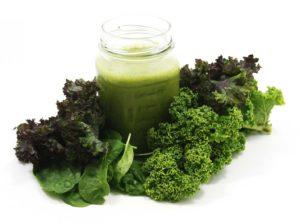
A fat-soluble vitamin which is well known for the important role it plays in blood clotting and preventing hemorrhage. Vitamin K is also an essential nutrient in building strong bones, preventing heart disease, and a crucial part of other bodily processes such as digestion.
Food Sources:
Green, leafy vegetables are the best source of this vitamin which is also known as phylloquinone. Kale probably is the best source with 1.1 mg per cup and then followed by collard greens and spinach with about 1 mg per cup, and is also found in more exotic sources such as the like of turnip, mustard, and beet greens.
Synthetic Sources:
Synthetic vitamin K, menadione, comes from coal tar derivatives and genetically modified and hydrogenated soybean oil, and involves using hydrochloric acid and nickel in the process. It is considered highly toxic and can cause damage to the immune system.
General Overdose and deficiency Information
Vitamin A
Overdose:
A severe Vitamin A overdose is known to cause death. Synthetic vitamin A is considered a toxin in the body, and it can easily accumulate in your body since it is a fat-soluble vitamin. This means that it can be stored on the fat cells of the body.
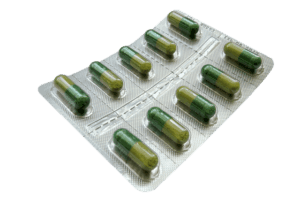 The basic signs of Vitamin A overdose appear as minor health concerns which include dry, rough skin, cracked lips, and hair loss (alopecia). In later stages, as it begins to accumulate symptoms may include irritability, headaches, high levels of the liver enzyme in blood, and liver disease.
The basic signs of Vitamin A overdose appear as minor health concerns which include dry, rough skin, cracked lips, and hair loss (alopecia). In later stages, as it begins to accumulate symptoms may include irritability, headaches, high levels of the liver enzyme in blood, and liver disease.
There is also a medical condition called acute vitamin A overdose which has severe symptoms which involves vomiting, high pressure in the brain, and can even lead to death.
Deficiency:
Vitamin A deficiency can result from inadequate intake of the vitamin. This can cause fat malabsorption or certain liver disorders. The deficiency of the nutrient impairs the immune system and hematopoiesis. This has been known to cause rashes and typical eye problems such as xerophthalmia (excessive dryness and irritation) and night blindness.
Vitamin B
Overdose:![]()
![]()
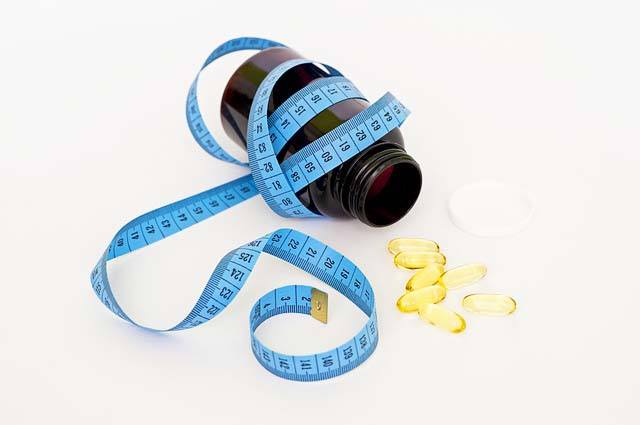
Vitamin B6 overdose can lead to nerve toxicity. B3 (niacin) on the other can carry complications such as toxicity of the liver, jaundice, and nausea. The B9 (folate) vitamin overdose can cause mask the symptoms of vitamin B12 deficiency which can cause other problems.
Deficiency:
A deficiency of vitamin B12 can lead to anemia. A mild deficiency may cause no symptoms. But if untreated, it may progress and cause symptoms such as: Weakness, tiredness, or lightheadedness.
Having not enough of vitamin B6, you may get sick more often and feel depressed or confused. You’ll also likely get scaly and cracked lips.
Without enough vitamin B1, you may have a weakness, fatigue, and even brain damage and can also lead to psychosis.
A deficiency of B7 can lead to skin rashes, hair loss, high cholesterol, and heart problems.
Vitamin C
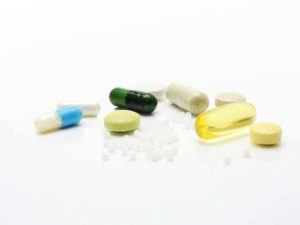 Overdose:
Overdose:
Vitamin C is a water-soluble vitamin which means that an excess amount doesn’t get stored in fat cells and instead gets transported out the body via urine. While natural sources of vitamin C usually gets excreted via the urinary system, the synthetic version has been known to cause problems. Overconsumption of vitamin C has been known to cause kidney stones.
In minor doses, it has been known to cause diarrhea, stomach cramps, and nausea.
Deficiency:
Signs and symptoms of vitamin C deficiency include brittle and dry hair, inflamed (gingivitis) and bleeding gums, and various skin conditions. Not having enough vitamin C can also cause a diminished rate of wound-healing, bruising, nosebleeds, and a high risk of getting infections.
In severe cases, a lack of vitamin C can cause a skin disease known as scurvy.
Vitamin D
Overdose:
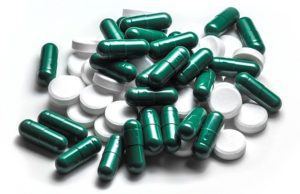 The main consequence of vitamin D toxicity is a buildup of calcium in your blood. A condition called hypercalcemia, which can lead to poor appetite, nausea, and vomiting. General body weakness, constant urination, and kidney problems can also occur.
The main consequence of vitamin D toxicity is a buildup of calcium in your blood. A condition called hypercalcemia, which can lead to poor appetite, nausea, and vomiting. General body weakness, constant urination, and kidney problems can also occur.
Vitamin D toxicity is uncommon even among those who take supplements. You are still at higher risk if you have predisposing health problems such as liver or kidney disease.
Deficiency:
Symptoms include bone pain and muscle weakness. For many people, the symptoms start subtle. Low blood levels of vitamin D have been known to Increase the risk of death from cardiovascular disease. In extreme cases, it has been known to cause rickets in children and developing infants.
Vitamin E
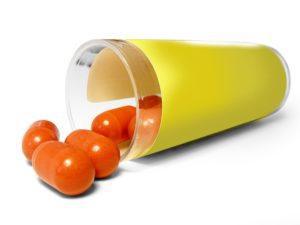 Overdose:
Overdose:
Vitamin E, in general, has been known to lessen the rates in men in becoming diagnosed with prostate cancer by as much as 17%. Vitamin E overdose is rare and virtually impossible if it is obtained through diet alone, but when taking supplements an overdose is more than likely to occur. The symptoms include blurred vision, weakness, dizziness, nausea, and diarrhea which in worst cases cause blood poisoning and death.
Vitamin E supplements have also been known to cause problems when taking anticoagulants which often results in internal hemorrhage to occur.
Deficiency:
The main symptoms include hemolytic anemia and neurologic deficits. The deficiency of the vitamin causes fragility of red blood cells and degeneration of neurons which particularly affects the peripheral axons and posterior column in the neurons.
Vitamin K
Overdose:
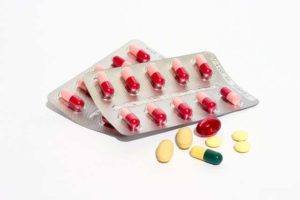 Vitamin K overdose is typically diagnosed in formula-fed infants or those who are receiving synthetic vitamin K-3 (menadione) injections. Due to the toxicity of the synthetic vitamin K, menadione is no longer used for the treatment of vitamin K deficiency.
Vitamin K overdose is typically diagnosed in formula-fed infants or those who are receiving synthetic vitamin K-3 (menadione) injections. Due to the toxicity of the synthetic vitamin K, menadione is no longer used for the treatment of vitamin K deficiency.
The effects of vitamin K toxicity can include jaundice in newborns, hemolytic anemia, and hyperbilirubinemia. The condition also blocks the effects of oral anticoagulants.
Deficiency:
Vitamin K deficiency is rare but commonly caused by antibiotics and certain medications such as blood thinning agents. Deficiency of the vitamin can cause bruising and blood problems such as bleeding.
Healthy Practice
 One of the most effective ways to minimize the damage caused by synthetic vitamin supplementation is through becoming well-informed and up-to-date. The truth about knowledge is power seems underrated, but it is simply an imperative rule one must comply. Health and wellness is a never-ending process of educating yourself, practicing control, and developing a deeper understanding of your body and how to best care for it.
One of the most effective ways to minimize the damage caused by synthetic vitamin supplementation is through becoming well-informed and up-to-date. The truth about knowledge is power seems underrated, but it is simply an imperative rule one must comply. Health and wellness is a never-ending process of educating yourself, practicing control, and developing a deeper understanding of your body and how to best care for it.
Although vitamins if obtained naturally such as from food sources cannot do much harm to the body and the risk for overdose is very rare. The opposite is true for synthetic vitamins. These are chemical elements obtained from other sources that mimic the body’s reaction to that specific nutrient.
The body, however, is a well-equipped machine which cannot easily be fooled by such cheap tricks. It can easily dispose of or remove such substances that they have to be maintained by taking them in large amounts than if they are obtained naturally. In certain medical conditions such as severe malnutrition these vitamins might prove useful or necessary, they still are needed to be carefully monitored by medical staff or professional to be effective or safe.
Common Synthetic Vitamins to Avoid:
- Vitamin A: Retinyl Palmitate
- Vitamin B1 (Thiamine): Thiamine Mononitrate, Thiamine Hydrochloride
- Vitamin B2 (Riboflavin): Riboflavin
- Pantothenic Acid: Calcium D-Pantothenate
- Vitamin B6 (Pyridoxine): Pyridoxine Hydrochloride
- Vitamin B12: Cyanocobalamin
- PABA (Para-aminobenzoic Acid): Aminobenzoic Acid
- Folic Acid: Pteroylglutamic Acid
- Choline: Choline Chloride, Choline Bitartrate
- Biotin: d-Biotin
- Vitamin C (Ascorbic Acid): Ascorbic Acid
- Vitamin D: Irradiated Ergosteral, Calciferol
- Vitamin E: dl-alpha tocopherol, dl-alpha tocopherol acetate or succinate
Other Toxic Ingredients to Avoid In Supplements
- Magnesium stearate or stearic acid
- Monosodium Glutamate (MSG) commonly disguised as “natural flavors” in most foods.
- Carnauba wax is commonly used in making car wax and shoe polish.
- Titanium dioxide is a known carcinogen
To sum it up, it is best to obtain your necessary nutrients through consumption of food sources than through advocating synthetic supplements.
Additional Reading:
- Vitamin Consumption: General Information
- What you need to know about Dietary Supplements
- Difference between Synthetic vs. Natural Vitamins
- Vitamin Toxicity Information Sheet
- Vitamin B Information
